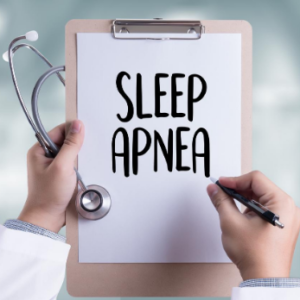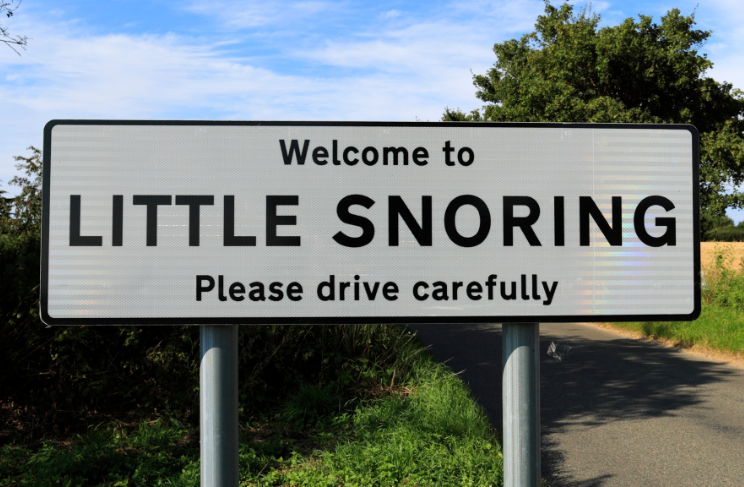What is Obstructive Sleep Apnea?

SG: The term apnea comes from the Latin word meaning “without breath.” There are two types of sleep apnea – obstructive (OSA) and central. The obstructive type is by far the most common. It occurs when the base of the tongue and soft palate relax and collapse the airway. Central apnea occurs when the central nervous system fails to signal the body of breathe.
Why is this condition so harmful to your patient’s health?
SG: When obstructive sleep apnea occurs, sleep is interrupted as we become aroused and begin to breathe again. Usually we don’t awaken; however, this sleep pattern disrupts the proper stages of sleep that help to rejuvenate the mind and body naturally.
Sleep apnea sufferers typically complain of excessive daytime fatigue, trouble concentrating and moodiness. The lack of sleep can lead to accidents – both occupational and traffic-related – causing injury and even death.
In addition to the harm caused by sleep deprivation, sleep apnea sufferers typically experience oxygen deprivation. The blocked and restricted airway limits the airflow into the lungs, which results in the potentially dangerous low blood oxygen levels.
The damaging effects to the body’s organs are significant. Oxygen deprivation due to sleep apnea over a long period of time can very likely cause stroke, diabetes, coronary artery disease, high cholesterol, high blood pressure, asthma, heart disease, obesity, GERD (gastric reflux), and erectile dysfunction.
Is snoring the same as Obstructive Sleep Apnea?
SG: No. Snoring is the sound of the soft palate vibration heard when the airway is partially collapsed. The difference between snoring and sleep apnea is oxygen deprivation; however snoring is not benign, and despite in comedy, it is no laughing matter.
Chronic loud snoring has been linked to transient ischemia attack (TIA) which occurs when blood flow to a part of the brain stops for a brief period of time, causing stroke-like symptoms for an hour or two.
Furthermore, the bed partner suffers from second-hand sleep deprivation and all of its consequences.
What is CPAP and how does it work?
SG: CPAP is a machine that helps a person with obstructive sleep apnea breathe more easily during sleep. CPAP stands for continuous positive airway pressure. The machine is attached to a flexible hose, which has either a mask or a nasal attachment. CPAP increases air pressure in the throat to keep the airway open, enabling a normal breathing pattern.
If your patients are currently using CPAP and experiencing good results, they should continue to use it as CPAP is considered the gold standard for the treatment of sleep apnea.
However, just like any other voluntary treatment regimen, compliance is an issue. There are numerous news reports of people dying from heart attacks in the early morning hours while their CPAP sat unused in the closet or on the night stand.
Can I offer an effective alternative to CPAP?
SG: Yes. Dental oral appliances not only are effective, they have higher compliance rates and higher subjective satisfaction than CPAP. Following is the published position of the American Academy of Sleep Medicine (AASM) regarding dental oral devices:
“Oral appliances (OAs) are indicated for use in patients with mild to moderate OSA who prefer them to continuous positive airway pressure (CPAP) therapy, or who do not respond to, are not appropriate candidates for, or who fail treatment attempts with CPAP. Until there is higher is higher quality evidence to suggest efficacy. CPAP is indicated whenever possible for patients with severe OSA before considering OAs. Oral appliances should be fitted by qualified dental personnel who are trained and experienced…”
The most common and widely-studied oral appliances is the mandibular advancement splint (MAS). It is a retainer-like device that fits on both the top and bottom jaws. The lower jaw is gently held in a forward protruded position, thus maintaining an open airway by limiting or preventing the tongue from dropping back.
MAS therapy is most effective for mild to moderate, non-obese OSA sufferers. Often there is a body position component to OSA which also must be addressed.
Why is MAS subjectively preferred to CPAP?
SG: Comfort and convenience seem to be the most cited reason by our patients. With MAS there is no restriction of movement. Most appliances allow you to speak and drink water. Unlike CPAP, MAS does not have to be disconnected and removed in order to get out of bed at night.
Another great advantage is there is no need to create a seal around the face or nostrils as with CPAP. Some of the most common complications of CPAP include air leaks, mask discomfort, claustrophobia, chest discomfort, sores on the face caused by the mask seal, eye irritation from airleaks, and swallowing air.
The most common side effect of MAS is mild tooth and jaw soreness and transient bite changes. These side effects are primarily noticed in the morning upon removal of the MAS. Fortunately they usually disappear within 20 to 30 minutes.
A dentist experienced in MAS therapy can reduce the occurrence of side effects and properly manage them if they occur. Our patients tell us that the side effects are minor – much easier to deal with than CPAP – and usually disappear within a few weeks or months. Most tell us the common side effects are a small price to pay for how much better they feel!
Why should your patients want a dentist-fabricated custom MAS rather than the prefabricated type they see online or on TV?
SG: There are several reasons. A custom-fabricated MAS provides a huge comfort advantage for people with obstructive sleep apnea. Custom MAS is designed to last for years and is extremely durable. Furthermore, a dentist will carefully and incrementally position the lower jaw to the optimal position. There are fewer side effects with custom MAS therapy.
Are there alternatives to in-lab sleep studies?
SG: If your patients have been avoiding a sleep study because of the inconvenience and cost, there is an alternative. Home sleep testing is becoming more and more common. Many insurance companies require home testing before approving in-lab testing. Many home test devices are very simple to use, but provide a great deal of information – enough to enable a valid diagnosis.
Will medical insurance cover MAS?
SG: Most PPO insurance plans and Medicare cover MAS.

